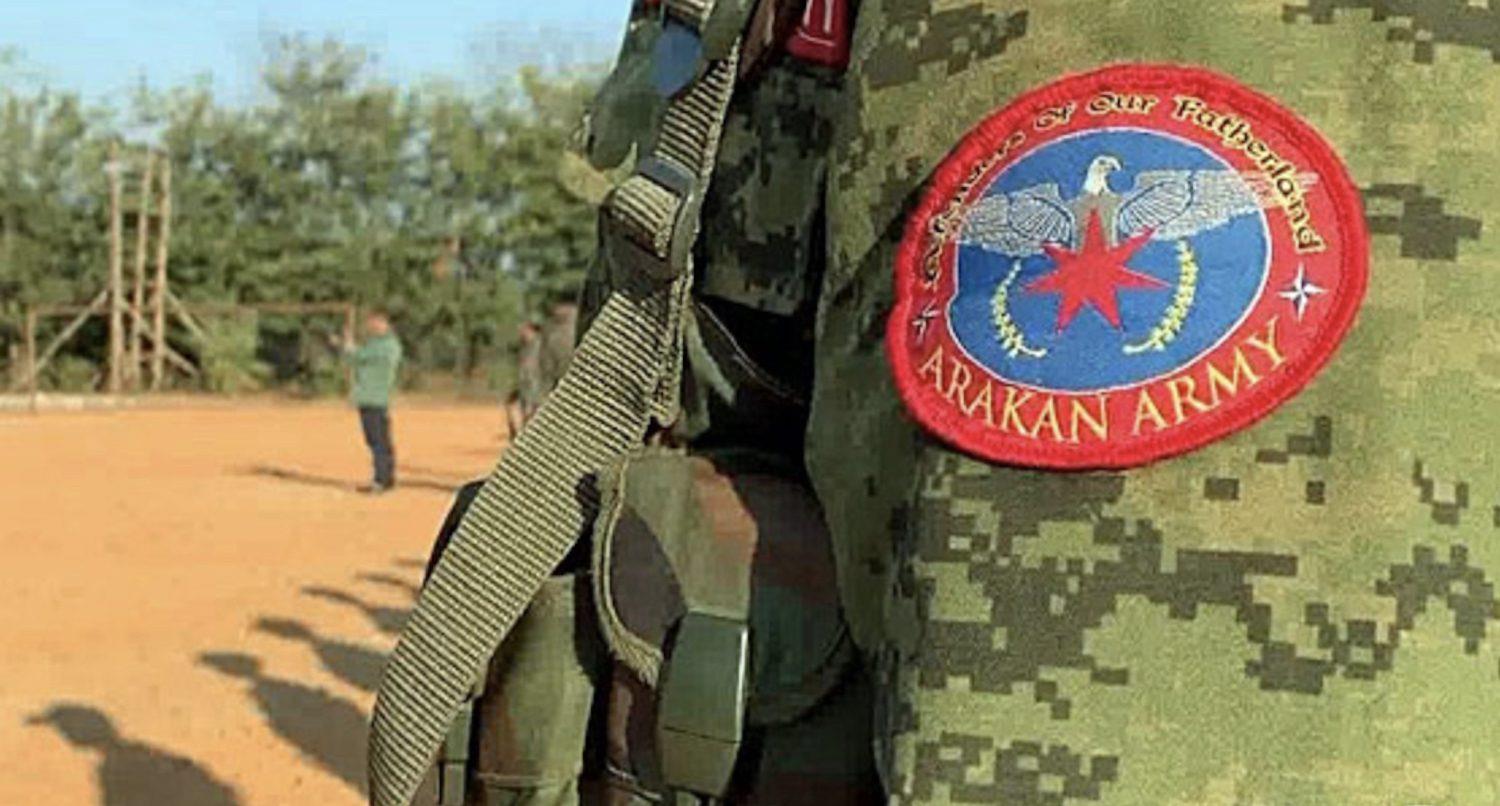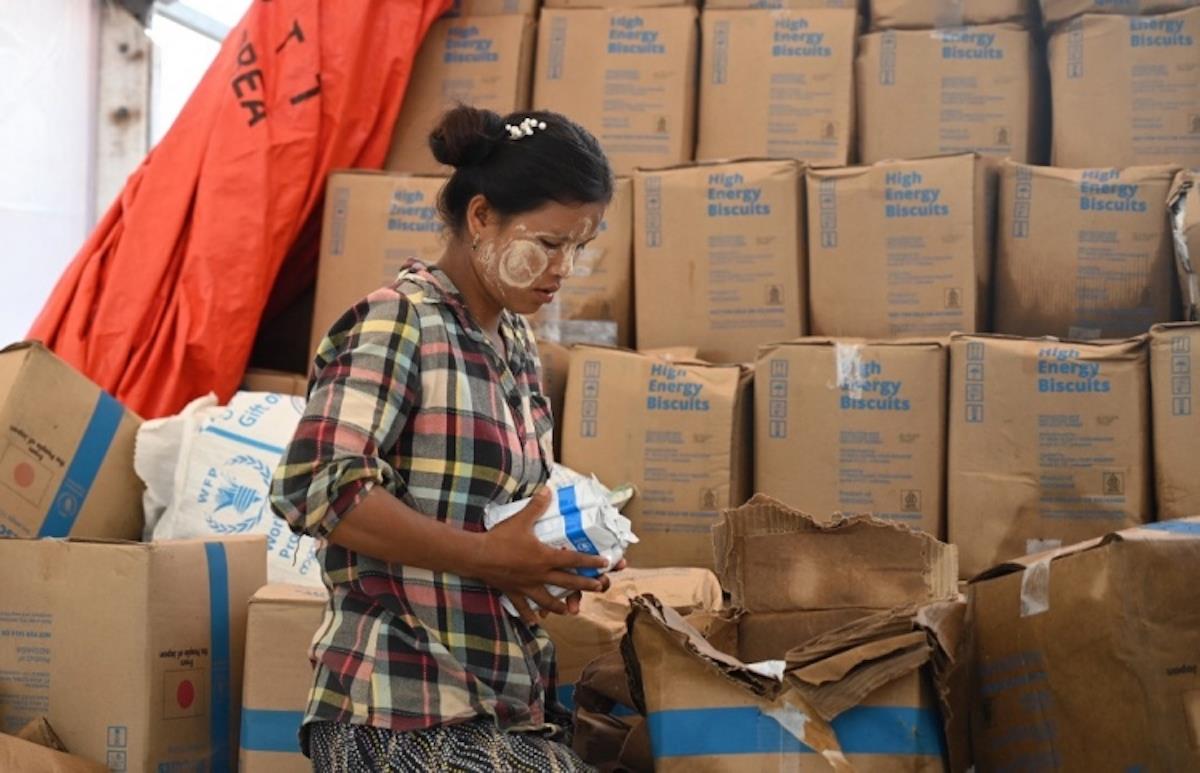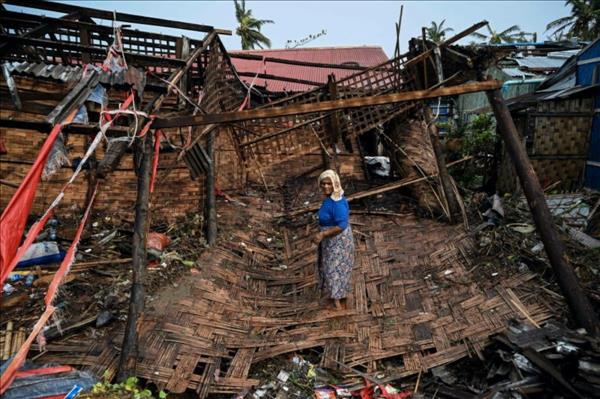(MENAFN- Asia Times) As if Myanmar's fortunes couldn't get any worse after two years of military repression and civil war, tropical Cyclone Mocha battered western Myanmar on May 14, the worst natural disaster to affect the country since the Cyclone Nargis disaster in 2008.
A Category 5 storm, with winds of over 200 kilometers per hour and tidal surges along the coastline, Mocha was particularly devastating to Sittwe and Rathedaung townships and surrounding areas as it traveled through central Rakhine into Chin state and onto Magwe and Sagaing Regions, which have suffered heavy flooding and wind damage.
The response to the storm, after several days of prior warning and evacuation of civilians, has been devastatingly slow. The death toll is not known, and will likely not be for some time. The military coup regime, the State Administration Council (SAC), claimed on May 21 that 145 people had been killed in Rakhine state. Local news sources, however, claim a much higher casualty rate, especially among Rohingya communities along the coast.
The wind devastation has been immense. The SAC claims that 183,024 houses have been badly damaged, 1,397 schools, 227 hospitals and clinics destroyed or damaged, and nearly 1,800 religious buildings including 59 monasteries, which are often used as civilian shelters following conflict or natural disasters, affected. Power is down and water supplies are reportedly badly damaged.
Added dangers include landmines dislodged by flooding and multitudes of poisonous snakes on the high waters; already reports of snakebites in Sagaing and Magwe have spiked. It was as if the path of Mocha was plotted to exacerbate already desperate civilian suffering from years of war in Rakhine and two years of savage military attacks in the northwest.
The SAC has projected a public image of assertive action to respond to the devastation, moving supplies through ship, road and the airport. Border Affairs Minister Lieutenant General Tun Tun Aung was in attendance in devastated Sittwe, with the state media headline of his visit saying he provided“aid to cyclone victim Bengalis.”
Even in the midst of massive suffering, the military cannot mute its systemic racism, with its derogative use of the“Bengali” term to describe Rohingya.

Foreign aid for Cyclone Mocha victims in Myanmar were handed over to regime officials on May 19. Photo: Embassy of India, Yangon
SAC Order No.34/2023 has assigned senior military officers to lead“duties for rehabilitation processes” in 18 townships in Rakhine and Chin states. This a very similar approach to post-Cyclone Nargis reconstruction in 2008, one that history shows leads generally to repression and widespread corruption. In Rakhine and Chin, as almost everywhere in Myanmar, trust in the regime is virtually non-existent.
It also potentially puts junta reconstruction efforts on a collision course with those of armed groups, whose slow expansion of territorial administration in Rakhine state is now imperiled.
The anti-SAC Arakan Army (AA) insurgent group and its civilian wing the United League of Arakan (ULA) already formed a Cyclone Mocha Emergency Rescue and Rehabilitation Committee for Arakan (ERRCA) on May 14.
The AA evacuated an estimated 100,000 civilians in the days before Mocha made landfall, an illustration of how its territorial operating space has expanded over the past several years. Its Arakan People's Authority (APA) has spread to several key Central Rakhine townships and it is poised to be able to provide immediate post-disaster relief and future reconstruction.
Already it has received aid from its long-term allies, armed groups the Kachin Independence Organization (KIO) granted kyat 3,000 Lakh (US$143,000) along with 1,000 Lakh each from Myanmar National Democratic Alliance Army (MNDAA) and the opposition National Unity Government (NUG) and the Ta-ang National Liberation Army sending 500 Lakh.
With extensive public support, the AA will also likely harness the generous civilian donations that always follow natural disasters, especially in the face of uneven support from central authorities.

Myanmar's insurgent Arakan Army is distributing disaster relief in Rakhine state. Photo: Twitter
The United Nations and international aid agencies have still not been granted full access despite pre-positioning stocks and advocating with SAC officials in Naypyidaw.
The latest UN Office Coordinating Humanitarian Affairs (OCHA) Flash Report on May 21 stated“humanitarians will soon be sharing a detailed, two-week distribution plan, for approval, outlining support that is ready to be provided to across all affected communities in Rakhine and Chin. In the meantime, partners who already have access are prioritizing the distribution of food and critical relief items where they can.”
If the UN cannot secure immediate access from military authorities to distribute urgently needed aid after two years of routine high-level engagement with the SAC regime, the obvious question is why is it still in the country? UN access to conflict zones has been mainly blocked for many years, but Mocha is a national disaster and should be depoliticized.
At times like this, the UN always decries its lack of donations to its Humanitarian Response Plan (HRP), which in 2023 is estimated at US$764 million. The humanitarian needs following the 2021 coup are undoubtedly immense, but the vast majority of the blame for these needs is due to the military's savage pacification campaigns against civilians and resistance forces.
The delayed response to the cyclone underscores an important reality for the UN, one starkly obvious over two years since the coup: it doesn't require anywhere near the staff presence it has in the country.
The UN Country Team (UNCT) should be stripped down to the most essential humanitarian responses. The UN shouldn't be able to cry me a river because the HRP is only 10% funded if it's wasting funding on development agencies that are not required to be present in Myanmar. Donors should insist on only the handful of emergency agencies such as OCHA and World Food Program (WFP) and children and refugee agencies remaining, which in turn would free up funding for the HRP.
The international aid operators are little better, the cyclone response is showing. Those who have decided to remain and operate in junta-controlled areas can claim the humanitarian imperative all they wish, but they are still actively collaborating with a military dictatorship and violating humanitarian neutrality by registering with the SAC.
This should in no way diminish the hard work being done by Myanmar staff of multiple agencies and civil society groups who pursue the hard emergency work at a fraction of the pay while foreigners in Yangon get to take the credit and weekends off.
The casually racist assumptions that always accompany disasters that only overpaid foreign opportunists in the UN can handle the response must be dismissed. Questions must also be raised that with such a limited emergency presence, how can the UN actually promise important“protection” components and“conflict sensitive programming?”
It also underscores, as all natural disasters and conflicts do, the utmost importance of local aid workers and the necessity for donors to ensure direct funding to those groups on the ground doing the important and often thankless work.
Calls to shift from the UN's state-centric approach to more“resistance humanitarianism” or“solidarity humanitarianism” have grown since the coup. These anti-military, alternative approaches to aid distribution have been ongoing for years in eastern Myanmar's borderlands and have been pursued in small but important ways in the conflict zones of Sagaing and Magwe, networks that can be adapted for disaster response now.

World Food Program aid reaches a Cyclone Mocha victim. Image: Twitter / Screengrab
Donors should also question the priority placed on aiding immediate responses and long-term support for reconstruction. This is not to suggest blocking aid to victims of the cyclone, not at all. But it is a salient reality that the SAC is a war criminal enterprise massacring civilians across the country and actively blocking aid and humanitarian activities.
Since the pre-coup war between the AA and Myanmar army began building in intensity since 2018, Rakhine civil society capacity has increased in important ways. It should be supported in ways that don't endanger their security and the welfare of communities they help, and ensure that the SAC doesn't benefit from rebuilding, as it is so clearly angling to do.
So as the SAC and AA project disaster response activities as legitimating processes – with the SAC likely to lose on all fronts there – international aid providers should consider genuinely reprioritizing how their aid flows to directly supporting Myanmar organizations and individuals doing the hard and crucial work on the cyclone-devastated ground.
David Scott Mathieson is an independent analyst working on conflict, humanitarian and human rights issue on Myanmar
Like this:Like Loading...

























Comments
No comment